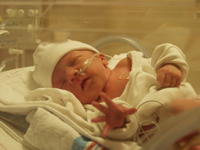- Citas Centro Médico de Caracas: Lunes, Miercoles y Viernes. Pulse el botón Agende una Cita
- Sistema de citas en linea exclusivo para Centro Medico de Caracas en San Bernardino
- Citas CMDLT: Jueves. llamar al 0212-9496243 y 9496245
- Las Emergencias son atendidas en CMDLT previa coordinacion personal al 04142708338
- Proveedor Seguros Mercantil y Sudeban
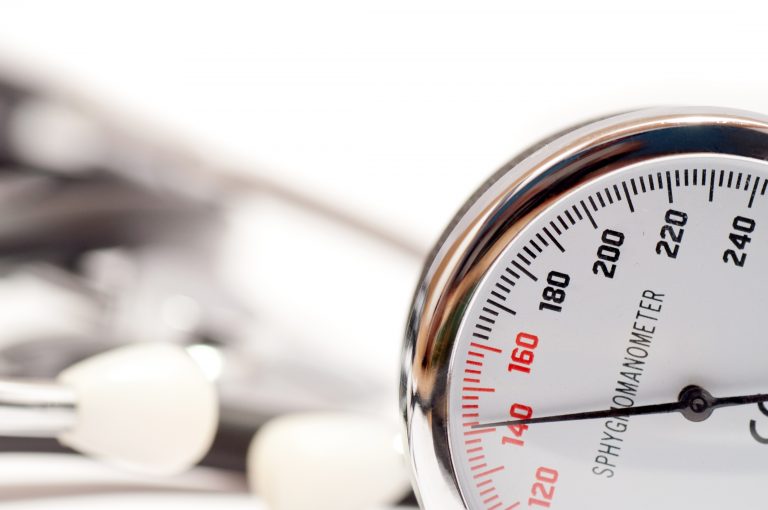
There is Arterial Hypertension with blood pressure (BP) values are equal to or greater than 140/90 mmHg (millimeters of mercury). When hypertension develops during pregnancy, it is called Pregnancy Induced Hypertension (PIH). If hypertension exists, there is previously talk of chronic hypertension (CHT), in this case, hypertension associated with pregnancy.
The CHT is a risk factor for the appearance of preeclampsia, fetal growth retardation, placental abruption, etc.
Classification
I Chronic Arterial Hypertension (CHT) : is the presence of chronically high blood pressure values ??above 140/90 before the start of pregnancy. There are two main types:
1.- Essential or Primary Hypertension (90%): this is essential in medicine, we do not know why it occurs but we know that many factors can condition its appearance: family tendency, genetic susceptibility, physical / emotional stress, cigarette , obesity and sedentary lifestyle, etc. This represents the majority of patients
2.- Secondary arterial hypertension (10%): hypertension is caused by a recognizable disease; if we can cure it, Hypertension disappears. Here we can find tumors, arterial anomalies and kidney disorders.
Depending on their severity, either of the two types can be classified into several levels of severity: Labile, Limitrophe, Mild, Moderate, Severe, and Emergency or Hypertensive Emergencies. The higher the figures of TA, the worse the cardiovascular prognosis of the patient and the higher the risk of presenting complications during pregnancy. Patients with CHT may have an increased risk of preeclampsia, small babies, prematurity, placental abruption, and abnormalities and birth defects due to the use of certain inappropriate medications during pregnancy.
II Hypertension Induced by Pregnancy (HIE) : this is the elevation of BP that occurs exclusively during pregnancy in a woman who did not suffer from CHT before presenting herself (around 10% of pregnant patients). This is the hypertensive disease par excellence during pregnancy, appears after week 20 (especially after 32), has very particular characteristics and disappears completely after the birth of the baby (in less than 6 weeks). It is classified in:
1.- Gestational Hypertension (GHT): in this case there are discrete elevations of the BP, slightly above 140/90 without associating other manifestations. This is the most benign type of HIE. Its management is based on resting and modifying the habit of life (limiting activity, stress, etc.). It does not cause problems for the baby or the mother but occasionally it becomes Preeclampsia if it occurs far from the term. It can be controlled without medication
2.-Preeclampsia: blood pressure figures equal to or greater than 140/90, loss of protein in the urine and edema (swelling by accumulation of fluid) atypical in hands, face, eyelids, etc. It can be very dangerous for the mother or the fetus, it requires a strict prenatal control, change of life habits, special diet, rest and medicines. Multiple maternal-fetal complications can occur and often pregnancy should be interrupted early if the disease warrants it. It is classified as Mild and Severe depending on the clinical and laboratory findings
3.- Eclampsia: this is the final stage of the disease and is characterized by the presence of convulsions in a mother with preeclampsia. Eclampsia (word in use since 1860) comes from the Greek eklampsis which means abrupt flash (like that of a lightning bolt) and wants to denote the way in which sudden and unexpected convulsions appear in the Preeclamptic patient. If it is not controlled in time, maternal and / or fetal death may occur. It is a very scary picture for those who observe it and usually leads to an emergency cesarean section regardless of the maturity of the baby.
III Preeclampsia added to Chronic Hypertension : the patient Chronic Hypertension is more susceptible to suffer Preeclampsia during pregnancy. The addition of Preeclampsia to the CHT is more risky than either of the two situations separately, the course may be unpredictable and we can quickly reach Eclampsia or other severe hypertensive complications without prior notice.
Chronic hypertension, complications and gestational effect
The most frequent form of hypertension, Essential Hypertension, affects 2-5% of pregnant women, and is present before pregnancy, whether they knew it or not. The long-standing chronic hypertensive patient poses a challenge to the obstetrician in charge due to the drug adjustments that must be carried out, must identify and treat hypertensive complications (Cardiac, Kidney, Eye, Vascular), determine the presence and impact of other problems associated physicians (Diabetes, Nephropathy, Obesity), detect the occurrence of preeclampsia added (usually after week 20), detect fetal complications (growth retardation, chronic fetal distress, placental insufficiency) and risk of premature birth. It is obvious that the contemporary management of the complex hypertensive patient must include a multidisciplinary team. As for the obstetrician, it must be clear that pregnancy evolves over time and that the absence of problems in the beginning does not guarantee that there will be no problems at the end. In fact, one should expect complications after week 20, especially after 32, and design a comprehensive and comprehensive action plan that includes maternal and fetal care, potential use of pulmonary maturation inducers, maternal and fetal admissions to Units. of Intensive Care, and even, premature termination of pregnancy. This is so true that in my most recent case I had to interrupt a pregnancy in a chronic hypertensive at 27 weeks, after having dealt with a severe maternal-fetal condition since week 24; had he not planned and foreseen the outcome, he probably would have witnessed a fetal death in uterus.
The more lasting and severe the hypertension has been, the greater the difficulties in treating it and the greater the possibilities of obstetric complications. With regard to modalities and therapeutic options during pregnancy, it should be noted that they are severely limited since most anti hypertensive agents are contraindicated during pregnancy due to their fetal teratogenic effects. In severe and intractable cases, the indicated medications will be used to save the mother even if the life of the fetus is endangered
It is beyond the scope of this article to explain the hypertensive pathology and the damage it causes to its target organs, but in pregnancy almost all medical conditions and previous organ damage have the potential to exacerbate and lead to a Preeclamptic complication in its direct forms. or surrogate, low birth weight, fetal neurological disorders, prematurity and postnatal sequelae due to prematurity.
For your peace of mind: in the vast majority of cases we achieved a happy ending and there were no severe complications. When we have had severe cases we have acted accordingly and in spite of having to take heroic measures we have had an excellent success rate working from the perspective of the multidisciplinary team.
I suffer from some of these diseases: Chronic Arterial Hypertension, Diabetes Mellitus, Rheumatic Diseases or Chronic Kidney Disease. What should I do?
You must plan your next pregnancy in advance and attend Prenatal Care before you get pregnant: Preconceptional Care. You must keep your illness under control and you must tell your Specialist doctor that you intend a pregnancy to make the necessary adjustments, including the change of some contraindicated medications in pregnancy. You should even ask your specialist if there is no contraindication for a pregnancy.
Unfortunately, pregnancy can accelerate a preexisting disease and lead to a considerable deterioration in the quality of life. In some cases we have seen the need to contraindicate a pregnancy or even have to interrupt it due to the accelerated deterioration of maternal health: in very good part of these cases the reason was the appearance of PIH that damaged maternal vital organs or worsened the disease of base and endangered his life; there was no other option but to end the pregnancy. The good news is that this is quite rare but you should put a lot of your part in controlling your illness so that this does not happen.
Final recommendations
Plan your pregnancy. Start Preconceptional Care (this is the ideal pregnancy planning) or start an early Prenatal Care if you are already pregnant. If you suffer from a chronic disease control it properly with a qualified specialist before starting a pregnancy.
Try to locate Centers that have the resources and specialists suitable for the proper and comprehensive control of your case.
Remember that our goal is to reach the happy term without maternal or fetal complications and to present minimize their effects to avoid debilitating or disabling sequelae.
A typical case
Primigesta of 35 years, pregnancy of 27 weeks, consultation for headache, visual disorders and high abdominal pain. Very high tension figures. The patient loses consciousness and immediately starts violent seizures.
Diagnostic probabilities:
- Eclampsia
- Stroke
- Hypertensive encephalopathy
- Metabolic encephalopathy
- Epilepsy
- Decision: eclampsia
Initial handling
- Cardiovascular and respiratory support.
- Prevent bodily injury and prevent airway obstruction.
- Do not try to stop the first seizure if you do not have vascular access.
- Avoid the recurrence of new episodes.
- Tension control to avoid CNS injury.
- Consider diagnosing and preventing associated complications.
- Consider interrupting the pregnancy by the most appropriate route.
Eclamptic patient minutes after the incident, note the large swelling of the face and tongue, which also shows bite injuries during seizures. This patient remains in Intensive Adult Therapy in an Institution with experience in the management of obstetric complications.
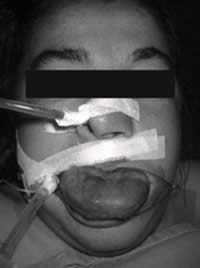
An emergency caesarean section was performed and a premature newborn was obtained who was admitted to intensive neonatal therapy.
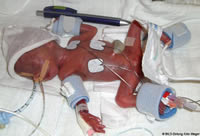
Recovery period, weeks after the event. The patient requires tracheostomy and tube feeding, graduated from Intensive Therapy and continues in intermediate care as a delicate patient, she graduates in one or two weeks.
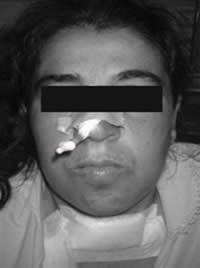
The baby evolved well. Stay in Therapy until you are able to require minimal care, feed by suction, gain weight and manage your body temperature.
